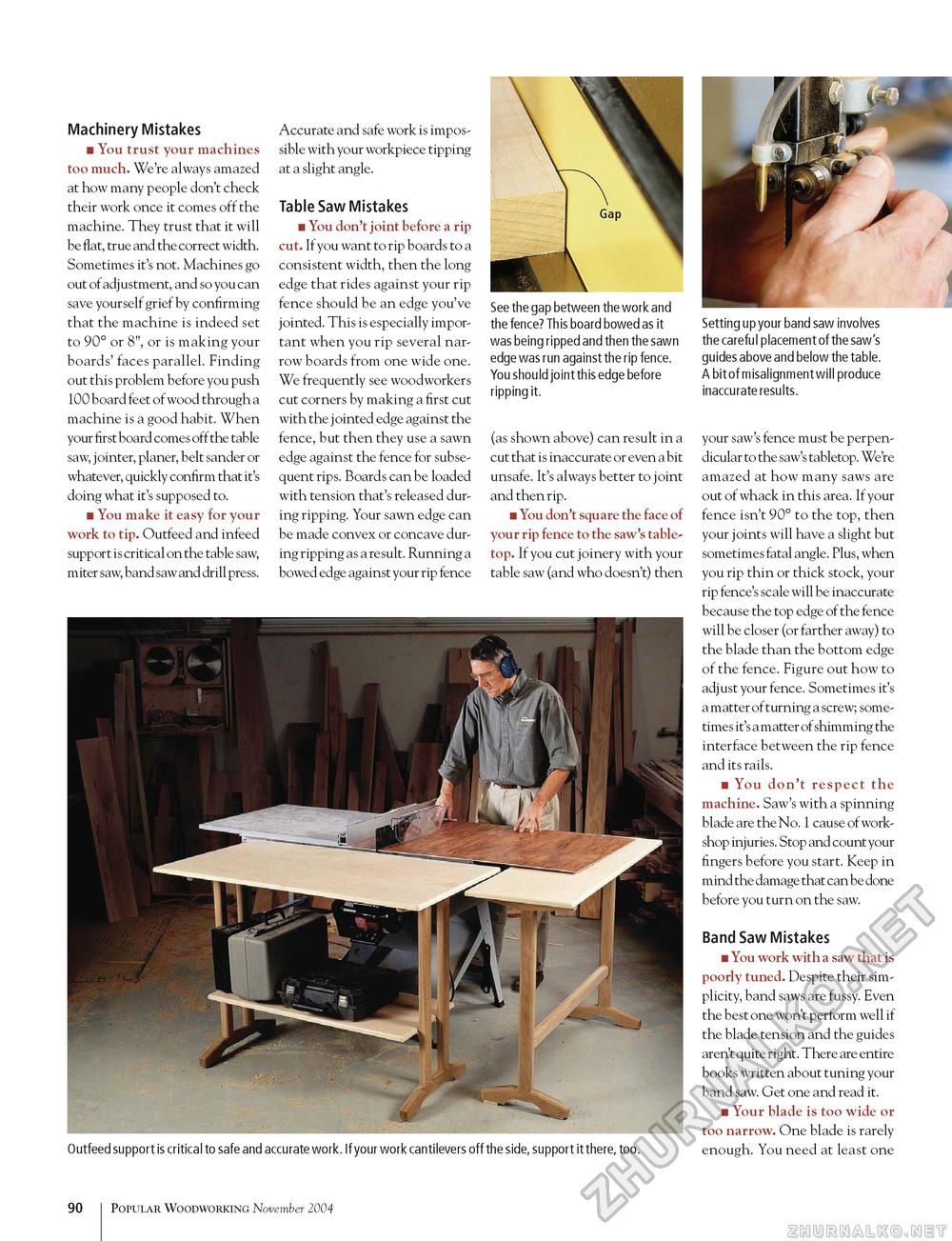Popular Woodworking 2004-11 № 144, страница 91
Machinery Mistakes ■ You trust your machines too much. We're always amazed at how many people don't check their work once it comes off the machine. They trust that it will be flat, true and the correct width. Sometimes it's not. Machines go out of adjustment, and so you can save yourself grief by confirming that the machine is indeed set to 90° or 8", or is making your boards' faces parallel. Finding out this problem before you push 100 board feet of wood through a machine is a good habit. When your first board comes off the table saw, jointer, planer, belt sander or whatever, quickly confirm that it's doing what it's supposed to. ■ You make it easy for your work to tip. Outfeed and infeed support is critical on the table saw, miter saw, band saw and drill press. Accurate and safe work is impossible with your workpiece tipping at a slight angle. Table Saw Mistakes ■ You don't joint before a rip cut. If you want to rip boards to a consistent width, then the long edge that rides against your rip fence should be an edge you've jointed. This is especially important when you rip several narrow boards from one wide one. We frequently see woodworkers cut corners by making a first cut with the j ointed edge against the fence, but then they use a sawn edge against the fence for subsequent rips. Boards can be loaded with tension that's released during ripping. Your sawn edge can be made convex or concave during ripping as a result. Running a bowed edge against your rip fence See the gap between the work and the fence? Th is board bowed as it was being ripped and then the sawn edge was run against the rip fence. You should joint this edge before ripping it. (as shown above) can result in a cut that is inaccurate or even a bit unsafe. It's always better to joint and then rip. ■ You don't square the face of your rip fence to the saw's table-top. If you cut joinery with your table saw (and who doesn't) then Outfeed support is critical to safe and accurate work. If your work cantilevers off the side, support it there, too. Setting up your band saw involves the careful placement of the saw's guides above and below the table. A bit of misalignment will produce inaccurate results. your saw's fence must be perpendicular to the saw's tabletop. We're amazed at how many saws are out of whack in this area. If your fence isn't 90° to the top, then your joints will have a slight but sometimes fatal angle. Plus, when you rip thin or thick stock, your rip fence's scale will be inaccurate because the top edge of the fence will be closer (or farther away) to the blade than the bottom edge of the fence. Figure out how to adjust your fence. Sometimes it's a matter of turning a screw; sometimes it's a matter of shimming the interface between the rip fence and its rails. ■ You don't respect the machine. Saw's with a spinning blade are the No. 1 cause of workshop injuries. Stop and count your fingers before you start. Keep in mind the damage that can be done before you turn on the saw. Band Saw Mistakes ■ You work with a saw that is poorly tuned. Despite their simplicity, band saws are fussy. Even the best one won't perform well if the blade tension and the guides aren't quite right. There are entire books written about tuning your band saw. Get one and read it. ■ Your blade is too wide or too narrow. One blade is rarely enough. You need at least one 90 Popular Woodworking November 2004 |








